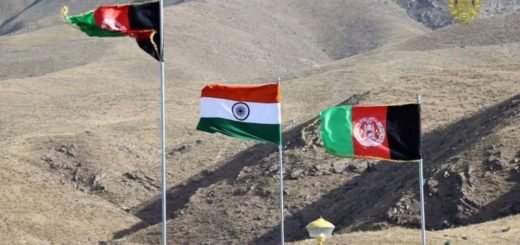India’s Unrealised Flattop Dreams: Chief of Defense Staff says no to Aircraft Carriers

Last week, in an exclusive interview to the Times of India, India’s Chief of Defense Staff General Bipin Rawat targeted the Indian Navy’s carrier plans, saying that “anything on the surface can be picked up by satellites and knocked off by missiles,” the Navy should invest more in submarines. This comes after his earlier statement in February this year when CDS Rawat indicated that the Indian Navy may not get approval for a third carrier anytime soon as the priority is to bolster its submarine fleet. These comments ensue a perennial debate in the Indian security and strategic circle, about the feasibility of the third aircraft carrier and the possible alternatives to the flattop dreams.

Aircraft carriers come with indispensable power projection capabilities, strategic and demonstrative impacts but they also come with a huge economic cost and vulnerabilities of being sunk in a maritime battle. In this piece, I will ponder upon two alternatives to the aircraft carriers and the debates surrounding them. First, is the proposal of developing submarines over carriers, as argued by CDS Rawat. Second, the proposal of developing India’s “unsinkable” aircraft carrier- Andaman and Nicobar Islands(ANI) and exploiting their strategic potential.
Hendrix Vs Mcgrath Debate:
In a classic debate between a retired Navy Captain Jerry Hendrix and retired Commander Bryan McGrath, over the issue of the “future of aircraft carriers,” Ironically, McGrath, a surface warfare officer, supported the carriers and Hendrix, a naval flight officer (NFO) with much experience flying E-2C Hawkeyes from aircraft carriers, took the opposing position. In the discussion over the issue of alternatives that can project power similar to an aircraft carrier, popped up an interesting idea of using nuclear-powered submarines for power projection in the contested waters with a credible threat to big nuclear carriers. Hendrix argued that “smaller surface ships are less risky and easily manoeuvrable than big carriers and can provide the presence, the port visits, the hosting, meanwhile, the SSN can prowl the seas.” He explained this strategy with the example of the vignette of the most dangerous animal in the forest- the lone baby grizzly bear because no one knew where the mother was- the real and un-located threat. In the view of Hendrix, SSN can play the role of the mother grizzly bear.
Currently, India has only one operational aircraft carrier, the INS Vikramaditya and a single SSN, Russian-made Akula-class derivative, the INS Chakra. Though SSNs are probably less capable but maybe more survivable alternatives. Why opt for an expensive option, when you can bolster your security needs with a cheaper, deceptive and enduring option, especially when you lack deep pockets?
In light of the above debate, the proposal of CDS Rawat to develop submarine’s should be taken seriously and more so in the middle of Covid19 pandemic, when the economy is at its historic lows and there is an enduring competition for public resources between the defence and nondefense goods. “The math” is more important today, then it was, anytime else.

Singh Vs Brewster Debate:
Australian National University’s David Brewster in a piece titled “Glug, glug, glug: India’s interest in unsinkable aircraft carriers,” made a case for immovable, unsinkable and safer island air bases, in place of movable, sinkable and unsafe aircraft carriers. He argued that developing Andaman and Nicobar as an island base can get more bang for its buck: “they may not be able to move, but they are likely to be far cheaper than aircraft carriers, and at least they won’t sink.” Writing in response, Abhijit Singh, a former Naval officer who heads the ORF Maritime Policy Initiative, argued that the unsinkable island is no substitute for aircraft carriers.
Though Singh has got some very interesting arguments, I believe that developing ANI, as an alternative to expensive flattops is an option worth considering. First, the Indian defence budget’s share of GDP has steadily fallen over the last twenty years and the last two years has been the lowest since the early 1960s. Thus there is a need to rationalize Indian investments. Pompous projects like developing INS Vishal, equipped with “Electromagnetic Aircraft Launch System” catapult, which is speculated to cost India around $5 billion, could be saved for later.
Second, India’s major security threat, China, has a defence budget that is roughly four times that of India’s size. Thus, I find no logic in adopting China’s carrier strategy, given India’s limited latent capabilities. India needs to find asymmetric approaches to addressing potential military threat’s. “Tit for Tat” is no asymmetric strategy and can lead to the undesirable arms race.
Third, India has a huge strategic potential untapped in the ANI. Unlike China which has boundary disputes in all the seas, around them, the ANI has clearly demarcated maritime boundaries. Air Marshal Anil Chopra argues that ANI should be converted into an ‘unsinkable’ aircraft carrier that could allow India to create an A2/AD maritime exclusion zone in the event of a conflict. Not everyone has got such stable choices, those who have, must not waste on them.
Fourth, CDS Rawat has time and again made it clear that India is not an expeditionary force that has to deploy around the globe. India has to fight along our borders and dominate the Indian Ocean Region. Further, India is not looking for power projection in China’s backyard. Abhijit Singh wrote in a recent article that “if there is a constant in India’s South China Sea policy, it is deference to Chinese sensitivities.”The strategy should always align with the goals. Thus keeping in mind India’s current goals, mandates and ambitions developing ANI and acquiring submarines seem to be an appropriate choice. Aircraft carriers are the “beating heart” of the fighting fleet, but the important question is, whether we have the deep pockets to win that?



















